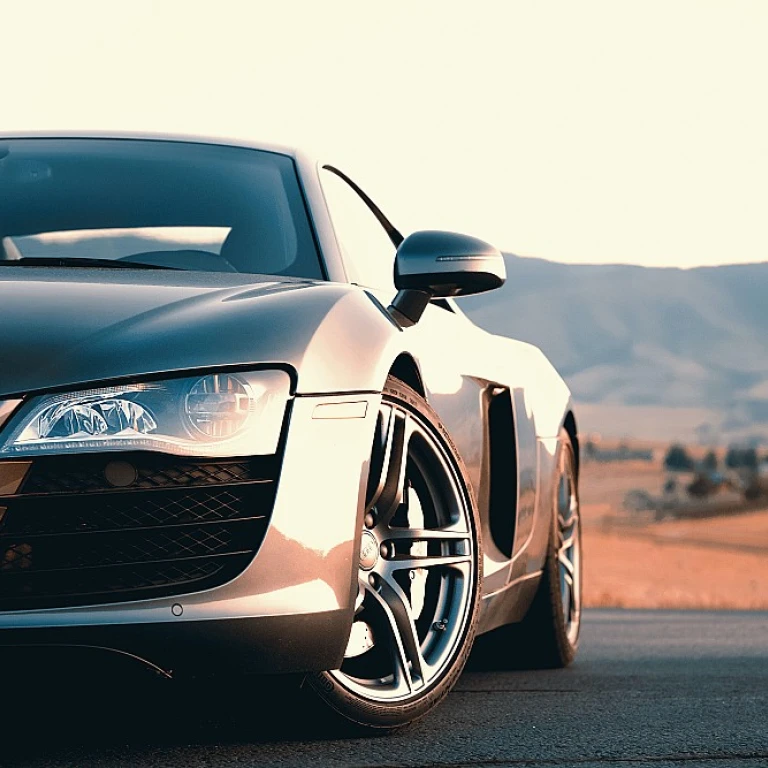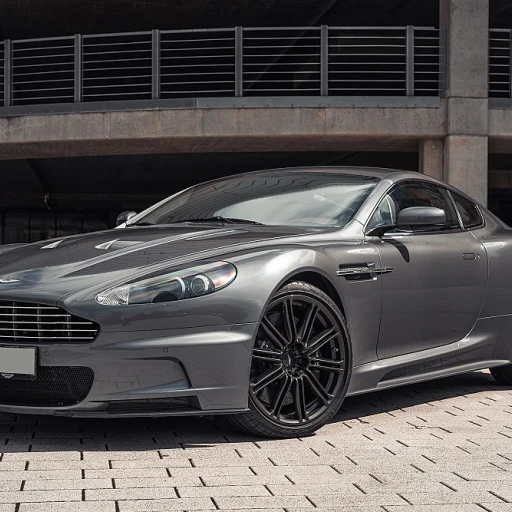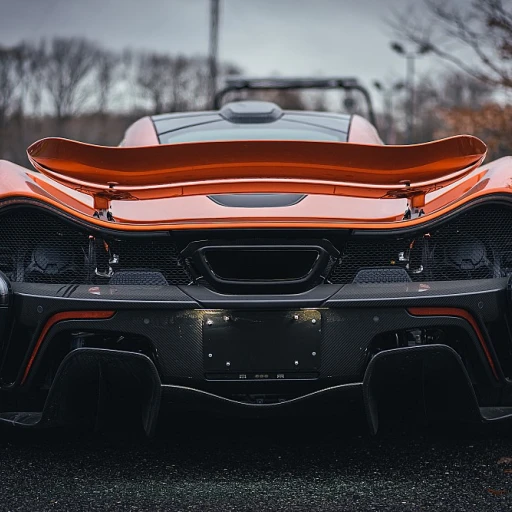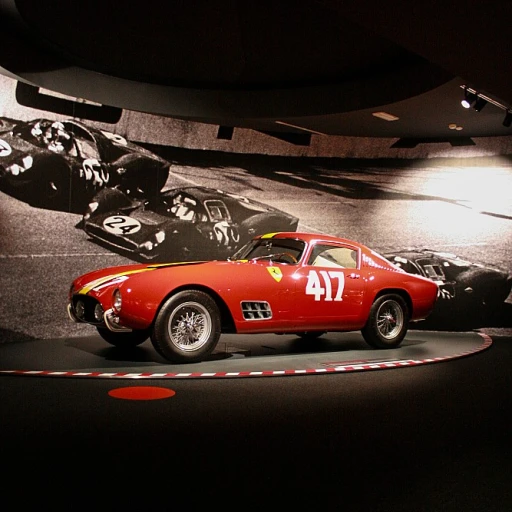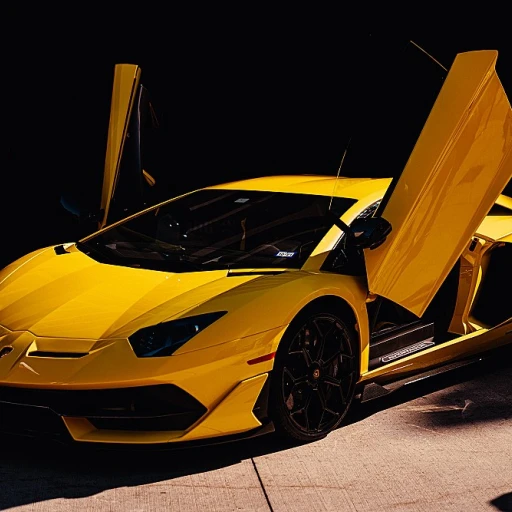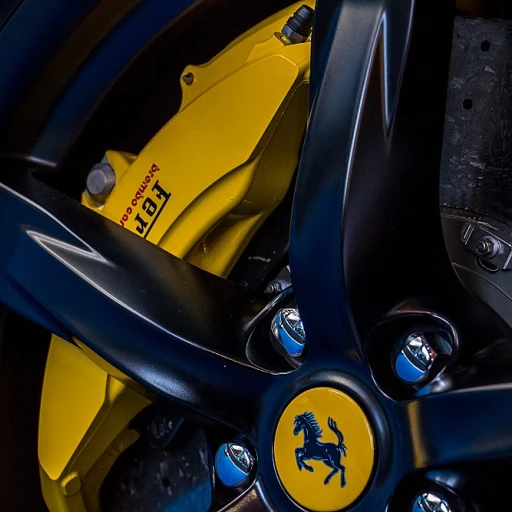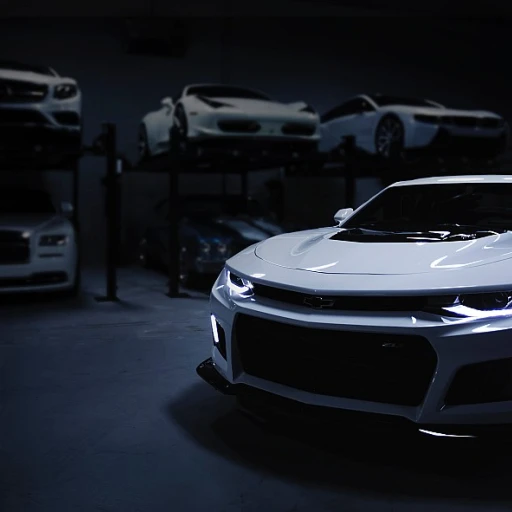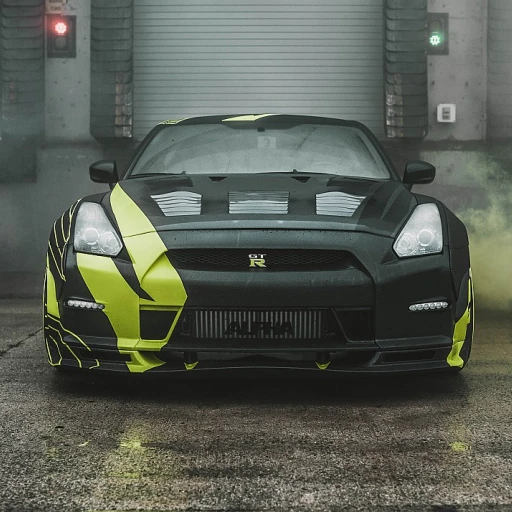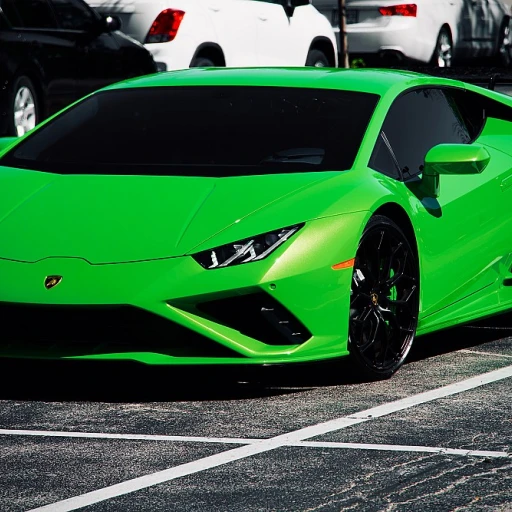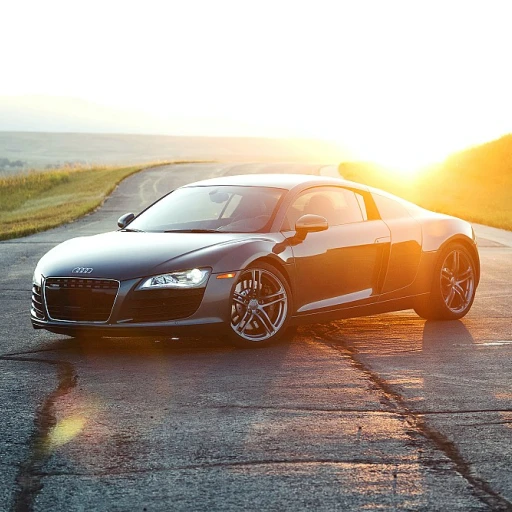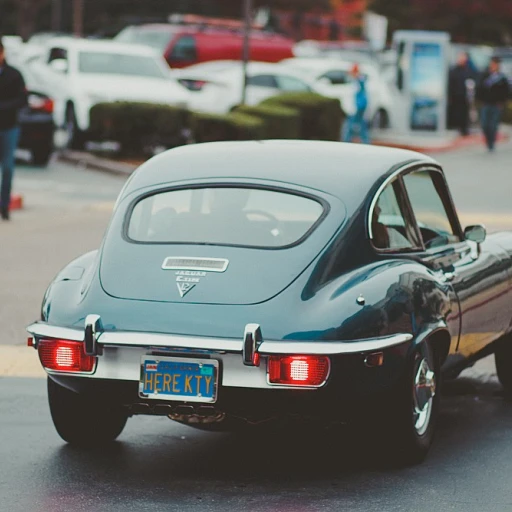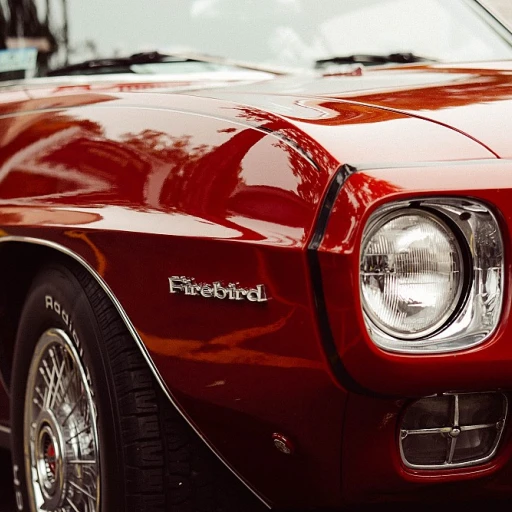
The rise of the 1970s sports cars
Revving up the excitement
The 1970s marked a sensational chapter in the automobile industry. A heady mix of innovation, swagger, and unbridled ambition defined the era. In those years, sports cars broke away from the norms of the previous decades, and every car enthusiast's heartstrings were tugged a little harder.
Fresh air
The decade kicked off with a bang as manufacturers found new ways to tune and enhance performance. As emissions regulations began to tighten globally, carmakers innovated around the problem rather than succumb to it. Enter the refined, more powerful engines and a new stylistic brio. This was a time when mid-engine configurations gained traction in sports cars like the Lancia Stratos and the Ferrari Dino, setting a trend that would influence automotive design for years to come.
The speed game
Flamboyant speedsters like the Lamborghini Countach debuted, embodying not just performance but striking design. The Countach's 4.0-L V12 engine coughed up 375 horsepower, making it a darling among speed junkies. Lotus, with its Esprit, also wowed crowds, featuring a 2.0-L 4-cylinder engine boosting 160 horsepower and edgy aesthetics thanks to designer Giorgetto Giugiaro.
Muscle and might
In America, muscle cars were roaring with engines pushing beyond the norms. The mighty Ford Mustang bossed around with models like the Ford Mustang Mach I, capable of a whopping 335 horsepower. Meanwhile, Pontiac's Trans Am became a symbolic representation of American grit and speed. These cars were all about high-performance and powerful engines, churning out horsepower figures that car lovers drooled over.
European finesse
Across the Atlantic, Europe’s sports cars were a blend of performance and elegance. Brands like Ferrari, Porsche, and Maserati upped the ante. The Ferrari 512 BB, for example, was a grand prix warrior, boasting a 4.9-L flat-12 engine producing 360 horsepower. Porsche didn’t lag behind, with the Porsche 911 Carrera RS setting new benchmarks for speed, featuring a rear-wheel-drive system and a 2.7-L flat-six engine generating 210 horsepower.
Japanese ingenuity
Not to be left out, Japanese manufacturers revolutionized the scene. Nissan’s 240Z and Mazda’s RX-3 were among the forerunners. The RX-3 sported a Wankel rotary engine, delivering a unique driving experience and impressive fuel economy for the time. They appealed to buyers looking for performance and reliability wrapped in a relatively low-cost package.
From classic to collectible
Fast forward to today, these icons of the 1970s have not only stood the test of time but have morphed into prized collectibles. Enthusiasts can often be spotted bidding at Mecum Auctions or scouring historic shows for hidden gems. For some collectors, videos or articles like this on capturing the essence of automotive elegance could offer valuable insights into preserving the glory of these classic rides. It's a passionate pursuit, driven by nostalgia and the thrill of reliving the golden era of 1970s sports cars.
Iconic models and their impact
Pioneering masterpieces from the 1970s
The 1970s saw the dawn of many legendary sports cars that left an indelible mark on automotive history. Among them, the Porsche 911 Carrera RS 2.7 stands out, not only for its impressive 210 horsepower but for the thrill it provided driving enthusiasts worldwide. Featuring a 2.7-liter engine, it reached a top speed of 150 mph, an iconic milestone in sports car performance. The Ferrari 365 GTB/4 Daytona, another emblem of the era, wowed aficionados with its 352 horsepower, 4.4-liter V12 engine. This model could sprint from 0 to 60 mph in a mere 5.4 seconds, epitomizing the blend of Italian elegance and ferocious speed.Raw power and muscle in 1970s America
Stateside, the Ford Mustang Mach 1 stole the show with its 7.0-liter V8 engine generating an astonishing 335 horsepower. Divided into multiple trims, it solidified its place in American muscle car lore with quarter-mile times often breaking the 14-second barrier, capturing hearts in a way only true muscle cars can. Another heavyweight was the Pontiac Firebird Trans Am, which, armed with a 6.6-liter V8 engine, produced 200 pound-feet of torque and had a charisma that's still revered today.Design trends and their impact
The 1970s also introduced radical design departures, thanks to visionaries like Giorgetto Giugiaro and Marcello Gandini. Lamborghini Miura, under Gandini’s masterful design, redefined the mid-engine layout, giving sports cars better balance and aerodynamics. Lamborghini Countach, another of Gandini’s marvels, featured sharp angles and scissor doors, symbols of 1970s innovation. Additionally, the Lotus Esprit, designed by Giugiaro, brought forth a wedged shape that became a hallmark of the era's exotic cars. Renowned for its 2.0-liter, four-cylinder engine producing 140 horsepower, it became synonymous with high performance and avant-garde aesthetics.The legacy of japanese sports cars
While European and American brands ruled, the 1970s also marked significant contributions from Japanese automakers like Nissan and Mazda. Mazda’s RX-3, powered by the revolutionary Wankel rotary engine, offered a unique driving experience with its 1.1-liter twin-rotor engine producing 110 horsepower. Nissan’s Fairlady Z, or Datsun 240Z, made waves with its 2.4-liter inline-six engine capable of generating up to 151 horsepower. It married performance and affordability, broadening access to sports cars and setting the stage for future Japanese innovations. To learn more about the allure of classic sports cars, check out the NYT feature on automotive legends.The muscle car phenomenon
The roar of American power: muscle cars of the 1970s
In the wild, wild '70s, American muscle cars were all about raw power, speed, and attitude. These beasts, highlighted by names like the Ford Mustang, Pontiac Firebird, and Oldsmobile Cutlass Supreme, were more than just cars; they were a statement. According to a report by Motor Trend, these cars defined the era with their high-performance engines and bold designs, capturing the hearts of young and old alike.
Explosive horsepower and torque figures
The engines in these muscle cars were nothing short of monstrous. We're talking about V8 engines cranking out incredible horsepower and torque figures. For example, the 1970 Chevelle SS 454 could produce an astounding 450 horsepower and 500 pound-feet of torque. It’s not just about numbers; these cars could go from 0 to 60 mph in under 6 seconds.
Iconic models that left their mark
Models like the Plymouth Barracuda and the Dodge Charger became icons. The Ford Mustang Mach 1, with its 429 Boss engine, not only pushed the limits of performance but also of style, with its sleek, aggressive lines and shaker hood scoop. Another classic, the Pontiac GTO, often referred to as 'The Judge,' was one of the best sports cars of the time, balancing power and drivability.
The allure of design and aesthetics
American muscle cars weren’t just about muscle, though. They were designed with aesthetics that still make hearts race today. With their long hoods, short decks, and wide stances, they exuded power even when standing still. These designs are often attributed to the greats like designer Marcello Gandini, whose Lamborghini Miura influenced many with its innovative and aggressive design language.
The performance edge
Muscle cars were not just about straight-line speed; their performance on the track was equally noteworthy. Ford Mustangs, for instance, dominated the Trans-Am Series, showcasing their superior engineering and performance. These races further solidified the muscle car's reputation and inspired the production of models specifically designed for high-speed pursuits.
Controversies around fuel economy
As gasoline prices rose during the oil crises of the 1970s, muscle cars faced criticism for their fuel inefficiency. The heavy, powerful engines consumed large amounts of fuel, leading to significant concerns over fuel economy. This controversy sparked a shift in the automotive industry, leading to smaller, more fuel-efficient engines in subsequent decades.
European elegance and performance
European engineering unparalleled finesse
The 1970s were a prime time for European automakers who showcased their engineering might alongside sleek design. This era saw the emergence of some of the most exquisite sports cars that combined power with elegance in ways that were previously unimaginable.
Ferrari and the prancing horse legacy
Ferrari, one of the most celebrated names in the world of high-performance cars, truly made its mark in the 1970s. Models like the Ferrari 308 GTB/GTS, introduced in 1975, were powered by a 2.9-liter V8 engine that produced up to 255 horsepower. These sports cars weren't just about raw power; they offered an improved driving experience, thanks in part to their enhanced aerodynamics and design finesse. The 308 GTB, with its top speed of 159 mph, became an iconic model of the decade.
Lamborghini Countach: the bold and the beautiful
Lamborghini challenged the status quo with the release of the Lamborghini Countach. Designed by Marcello Gandini, the Countach became a poster child for exotic sports cars. Its wedge-shaped design and scissor doors were revolutionary, setting new design trends. Equipped with a 4.0-liter V12 engine capable of 375 horsepower, the Countach could achieve a top speed of 179 mph, leaving enthusiasts and competitors alike in awe.
Porsche 911: timeless excellence
The Porsche 911 continued to thrive throughout the 1970s, with models like the Porsche 911 Carrera RS 2.7 establishing its legacy. The 911 Carrera RS was fitted with a 2.7-liter flat-six engine that produced 210 horsepower, and it was known for its agility and precision on both the road and track. This model's rear-engine layout and aerodynamic profile contributed to its iconic status.
Lotus Esprit: blending performance and style
The Lotus Esprit made its debut in 1976, capturing attention with its sharp, angular design by Giorgetto Giugiaro. This sports car was not just a visual delight but also a performance machine. The early models were powered by a 2.0-liter inline-four engine, producing 160 horsepower. While this might seem modest compared to some of its contemporaries, the Esprit's lightweight and nimble handling made it a standout. Its later variants, especially the Esprit Turbo, saw even greater performance enhancements.
European automakers in the 1970s didn’t just manufacture sports cars; they engineered legends that combined unparalleled performance, cutting-edge design, and a touch of sophisticated elegance. These innovations laid the groundwork for future generations and kept enthusiasts enthralled through the decades. For collectors and enthusiasts, preserving these classic sports cars is akin to holding onto an irreplaceable piece of automotive history.
The Japanese sports car revolution
Japanese ingenuity redefines sports cars
The 1970s wasn't just about European and American muscle cars; it also marked the revolution of Japanese sports cars. Toyota, Nissan, and Mazda rose to prominence during this era by producing vehicles that not only competed with their Western counterparts but often surpassed them in innovation, reliability, and affordability.
Toyota celica: a game changer
The Toyota Celica was a prime example of Japanese engineering excellence. Launched in 1970, it featured a 2.0-liter, four-cylinder engine, which was more efficient than many larger engines of the time. This model quickly gained popularity for its sporty design and performance capabilities. With a focus on fuel economy and a sleek silhouette, it made owning a sports car more accessible to a broader audience.
Nissan's Z cars: blending performance and style
The Datsun 240Z, introduced by Nissan in 1969, became a significant player in the 1970s sports car market. It was powered by a 2.4-liter, straight-six engine, producing around 150 horsepower. Its lightweight design and rear-wheel drive configuration provided a driver-centric experience comparable to European sports cars. The 240Z's impact was so significant that it's viewed as one of the best sports cars of the decade, blending performance, affordability, and style.
Mazda's rotary engine marvel
Mazda took a different path with its RX series featuring the Wankel rotary engine. Introduced in the 1967 Mazda Cosmo Sport and later models like the RX-2 and RX-3 in the early '70s, this engine was known for its compact design, allowing for a lower hood line and a perfect weight distribution over the front and rear wheels. Enthusiasts admired the unique engine sound and high-performance capabilities provided by this innovative technology.
Unique selling points: reliability and innovation
Japanese sports cars of the 1970s weren't just about power and looks; they were also about pushing the boundaries of technology and reliability. The Toyota Supra, another notable model from the decade, cemented Toyota's reputation for creating high-performance, dependable vehicles. Studies from the '70s showed that Japanese cars consistently outperformed their European and American counterparts regarding long-term reliability and maintenance costs.
Impact and legacy
The 1970s Japanese sports car revolution had a lasting impact on the industry. According to data from Mecum Auctions, their models are now considered classics and can fetch prices comparable to the iconic European and American sports cars of the same era. These vehicles set new standards in design, performance, and reliability, paving the way for future generations of sports cars from Japan, solidifying their place in automotive history.
Engine innovations and performance
Revolutionary engine designs
During the 1970s, sports cars experienced significant advancements in engine technology and performance. One of the most remarkable innovations was the Wankel rotary engine, notably used by Mazda in their RX-7 model. Unlike traditional piston engines, the rotary design offered smoother operation and higher revolutions per minute (RPM). According to a study by the Society of Automotive Engineers, the Wankel engine's simplicity allowed for more power and less weight, an ideal match for sports cars of that era.1 Another game-changing development came from Porsche with their mid-engine layout in the 1970 Porsche 914. This model, co-developed with Volkswagen, featured a rear mid-engine placement, which greatly improved vehicle balance and handling dynamics. Porsche's approach not only led to better performance but also paved the way for future mid-engine sports cars.2 Muscle cars were also part of this innovation boom. The 1970 Plymouth Hemi Cuda, for example, boasted an impressive 7.0-liter V8 engine producing up to 425 horsepower and 490 pound-feet of torque. Its raw power and high performance established it as one of the most iconic American muscle cars. Similarly, Ford's Mustang Mach 1 came equipped with a 7.0-liter Cobra Jet V8, making it a prominent figure in the muscle car phenomenon.3 Ferrari made headlines with the launch of the 1973 Ferrari 308 GT4, designed by Marcello Gandini. It introduced a 3.0-liter V8 engine producing 255 horsepower. The lightweight design and powerful engine allowed the 308 GT4 to reach top speeds of up to 150 mph.4 Lamborghini also made its mark with the Miura and Countach models. The Miura, often cited as the world's first supercar, utilized a 3.9-liter V12 engine. In contrast, the Countach launched in 1974 featured a mid-engine 4.0-liter V12 capable of producing 375 horsepower, setting new benchmarks for performance and design.5 “The 1970s represented a period of immense innovation, pushing the boundaries of what sports cars could do,” noted automotive historian and expert, Michael Lamm. “It laid the groundwork for the modern sports car performance we see today.”6 top speed achievements In terms of outright speed, several 1970s sports cars pushed the envelope. The Porsche 911 Turbo, introduced in 1975, came with a turbocharged 3.0-liter flat-six engine producing 260 horsepower. It could reach a top speed of 153 mph, setting a benchmark for high-performance sports cars. Similarly, the Lamborghini Countach LP400, with its innovative design and powerful V12 engine, reached top speeds of 179 mph.7 Lastly, the European elegance of Ferrari's lineup shouldn't be overlooked. The Ferrari Daytona, or the 365 GTB/4, utilized a front-engine 4.4-liter V12. Producing 352 horsepower, it could hit a remarkable top speed of 174 mph. This demonstrated that the 1970s were not only about muscle cars but also about refined engineering and superior design.8 In conclusion, 1970s sports cars were a blend of innovative engine designs, raw power, and superior performance. The advancements made during this decade continue to influence car design and engineering today. 1 Society of Automotive Engineers, “The Wankel Rotary Engine,” 1975. 2 Porsche Historian Archives – Porsche 914 Development, 1970. 3 Motorsport Magazine – Muscle Car Special Edition, 2020. 4 Ferrari Official Archive – Ferrari 308 GT4 Specifications, 1973. 5 Lamborghini Press Release, Miura and Countach Models, 1970s. 6 Interview with Michael Lamm, Automotive Historian, 2022. 7 Porsche 911 Turbo Development History, Porsche Museum Archives. 8 Ferrari Daytona, Top Speed Records, Auto Italia Magazine.Design trends and aesthetics
The marriage of form and function
The 1970s was a golden era for sports cars, blending cutting-edge design with high performance. The era saw cars that not only turned heads but also delivered exhilarating driving experiences. A standout example is the Lamborghini Countach, designed by Marcello Gandini. The Countach’s sharp angles and scissor doors were revolutionary, boosting the car’s appeal and establishing design trends that persist today.
Futuristic and aerodynamic shapes
During this time, car manufacturers began to understand the importance of aerodynamics. Sports cars like the Ferrari 512 BB and BMW M1 showcased sleek, low-slung designs that reduced drag and increased speed. These models were not just about looking good but harnessed design for performance. The Lotus Esprit, designed by Giorgetto Giugiaro, exemplified this with its wedge shape, enhancing stability and speed.
A symphony of curves and edges
The 1970s also celebrated a blend of sharp edges and smooth curves. Porsche’s 911 Turbo, with its iconic round headlights and wide rear haunches, is a testament to this harmonious design philosophy. Meanwhile, the Ford Mustang Mach 1 combined muscular lines with refined aesthetics, reinforcing its position as an American muscle car icon.
Inside the cockpit: blending luxury with sport
It wasn’t just the exteriors that caught attention; the interiors of 1970s sports cars were equally significant. The Toyota Celica and Maserati Ghibli, for instance, featured luxurious materials like leather and wood, combined with high performance tech. These cars ensured that drivers experienced comfort without compromising speed, making long drives enjoyable.
Vivalike engines and high performance
Design and performance went hand-in-hand in the 1970s. Ferrari’s models, for instance, were powered by V8 or V12 engines, producing horsepower that thrilled any speed enthusiast. The Pontiac Trans Am and Buick GSX focused on delivering massive torque and horsepower, embodying the muscle car spirit. The mid-engine layouts of cars like the Lamborghini Miura influenced future designs, distributing weight more evenly and enhancing high-speed stability.
Lasting impact and influence
The design trends of the 1970s continue to inspire modern sports cars. Cars worth buying today often nod to this era of elegance mixed with raw power. From the aerodynamic finesse of Nissan Z-cars to the luxurious interiors of modern luxury sports models, the imprints of the 1970s remain unmistakable.
Collecting and preserving 1970s sports cars
The market for vintage car collectors
Collecting 1970s sports cars has become a labor of love and an investment for many enthusiasts. According to Mecum Auctions, auction sales for classic sports cars saw a noticeable increase over the past decade, with certain models from Porsche, Ferrari, and Lamborghini commanding prices well into the millions. For example, a 1973 Porsche 911 RS was sold for a staggering $1.4 million in 2017.
Restoration and value
The value of a classic car significantly depends on its condition, originality, and provenance. Restoring vintage cars can be a meticulous process involving sourcing original parts and preserving as many original components as possible. Experts like Wayne Carini advocate for maintaining the integrity of these vehicles. He once said, “Preserving the original is far more valuable than creating a clone.”
Investment opportunities
Investing in 1970s sports cars can be rewarding. A study by classic.com revealed that the average annual return on investment for classic cars was approximately 12%. Specific models like the Lamborghini Miura and Ferrari 365 GTB/4 Daytona showed even higher returns. The nostalgia and connection to a bygone era drive this market. In 2021, a restored Lamborghini Miura SV fetched over $2 million at a Sotheby’s auction.
Case studies of prized models
Some cars have become legendary in the collector's universe. Take the Ford Mustang Mach 1, known for its powerful V8 engine and classic muscle car design. In 2020, a 1971 model in pristine condition was sold for $95,000. Similarly, the elegance of the Lotus Esprit and its association with James Bond movies has made it a coveted piece, with prices ranging from $70,000 to $100,000.
Tales from collectors
Dr. James Singer, a noted collector, shared, “Owning a classic 1970s sports car is like owning a piece of automotive history. You don’t just buy a car; you buy a story.” His collection includes a meticulously restored 1976 Toyota Celica, which he describes as a testament to Japanese engineering and design.
Preserving the legacy
Keeping the legacy of 1970s sports cars alive involves a blend of passion, knowledge, and dedication. Organizations like the Historic Vehicle Association (HVA) play a crucial role in this effort by documenting the history and significance of classic vehicles. They aim to celebrate and preserve America’s automotive heritage.

